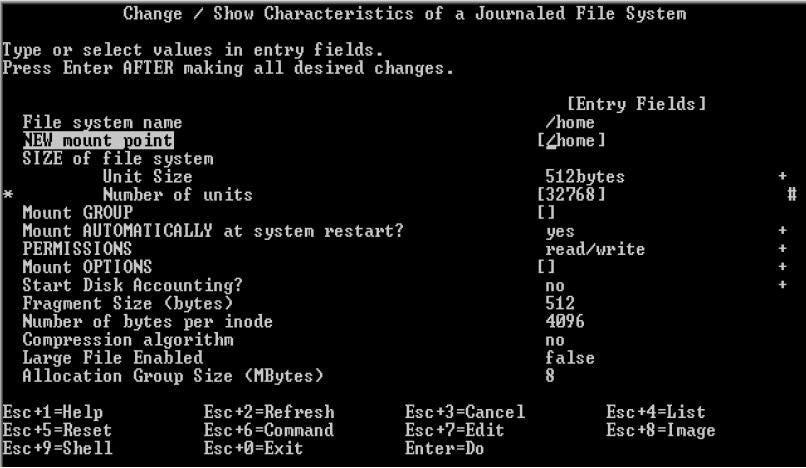A Comprehensive Review of JFS (Journaled File System)
The Journaled File System (JFS), developed by IBM, is a filesystem that has carved a niche for itself in the realm of data storage solutions. Originating as part of IBM's AIX operating system in the early 1990s, JFS was later adapted for Linux, where it was released under an open-source license. Known for its efficiency, stability, and low resource consumption, JFS offers a reliable alternative to other Linux filesystems such as Ext4 and XFS. This review explores its history, design, performance characteristics, and use cases, providing an in-depth analysis of its role in modern computing.
Origins and Development
IBM's development of JFS was driven by the need for a robust filesystem capable of handling large-scale enterprise workloads on AIX. The original version, now referred to as JFS1, laid the foundation for what would become one of the industry's most efficient filesystems. In the late 1990s, IBM introduced JFS2, a complete redesign aimed at addressing the demands of modern computing environments. It is this second version, JFS2, that was ported to Linux and remains in use today.
IBM released JFS for Linux in 2000 under the GNU General Public License, allowing it to be freely used, modified, and distributed. This move broadened its reach and established it as a viable alternative to traditional Linux filesystems. However, despite its technical merits, JFS never achieved widespread adoption, partly due to the dominance of Ext-family filesystems and the rise of XFS and newer alternatives like Btrfs.
Design and Architecture
JFS is designed with efficiency at its core. Its architecture is optimized for minimal CPU and memory usage, making it particularly well-suited for resource-constrained systems. The filesystem employs a B+ tree structure for metadata organization, which ensures rapid access and efficient storage management. This design allows JFS to handle large files and directories with ease.
One of the standout features of JFS is its journaling mechanism. Like other journaling filesystems, JFS maintains a log of changes before applying them to the main filesystem. This ensures data consistency in the event of a power failure or system crash. JFS focuses on metadata journaling, striking a balance between performance and reliability. While this approach may not offer the same level of data protection as full data journaling, it significantly reduces write overhead and improves performance.
JFS also employs dynamic inode allocation, a feature that sets it apart from Ext4. Instead of pre-allocating a fixed number of inodes at filesystem creation, JFS dynamically generates inodes as needed. This results in more efficient utilization of disk space, particularly on filesystems with a high volume of small files.
Performance Characteristics
Performance is a defining attribute of JFS. Its lightweight design ensures that CPU and memory usage remain low, even under heavy workloads. This makes it an excellent choice for systems with limited computational resources, such as embedded devices or older hardware.
JFS excels in sequential read and write operations, delivering stable performance across a variety of scenarios. Its quick mounting times are particularly notable, even for large filesystems. This is a significant advantage for applications requiring frequent reboots or those managing large storage volumes.
However, JFS is not without limitations. It may struggle in scenarios involving high levels of concurrent I/O or workloads requiring advanced features like snapshots or native encryption. While JFS includes an online defragmentation tool to maintain performance over time, its lack of support for certain modern filesystem features may limit its appeal in some environments.
Stability and Reliability
Stability has always been a hallmark of JFS. The filesystem has been extensively tested and proven in enterprise environments, where data integrity is paramount. Its journaling mechanism ensures that filesystem consistency is maintained, even in adverse conditions. Additionally, the open-source community has contributed to its development, ensuring that it remains a reliable option for Linux users.
Despite its stability, the lack of active development in recent years is a cause for concern. While JFS continues to function well for its intended use cases, the absence of regular updates means that it may not fully support the latest hardware and kernel advancements. This stagnation has led many to question its long-term viability in a rapidly evolving technological landscape.
Use Cases
JFS is best suited for scenarios where resource efficiency and low overhead are critical. It shines in environments with limited CPU and memory resources, such as embedded systems, network-attached storage (NAS) devices, or legacy hardware. Its ability to handle large files and directories also makes it a viable choice for certain enterprise applications, particularly those involving sequential data access.
However, JFS is less suitable for high-performance computing environments or workloads requiring advanced features. In such cases, filesystems like XFS or Btrfs may offer better performance and functionality. For general-purpose use, Ext4 often remains the preferred choice due to its balance of performance, features, and community support.
Conclusion
JFS stands as a testament to IBM's engineering prowess, offering a filesystem that prioritizes efficiency, stability, and simplicity. While it may not boast the feature set or performance characteristics of more modern filesystems, its low resource consumption and reliable journaling make it a compelling option for specific use cases. However, its declining development and limited community support may pose challenges for users seeking long-term solutions.
For those operating in environments where the unique strengths of JFS align with their requirements, it remains a solid choice. Yet, for most users, the practical advantages of widely supported alternatives like Ext4 and XFS may ultimately outweigh the specialized benefits of JFS.


